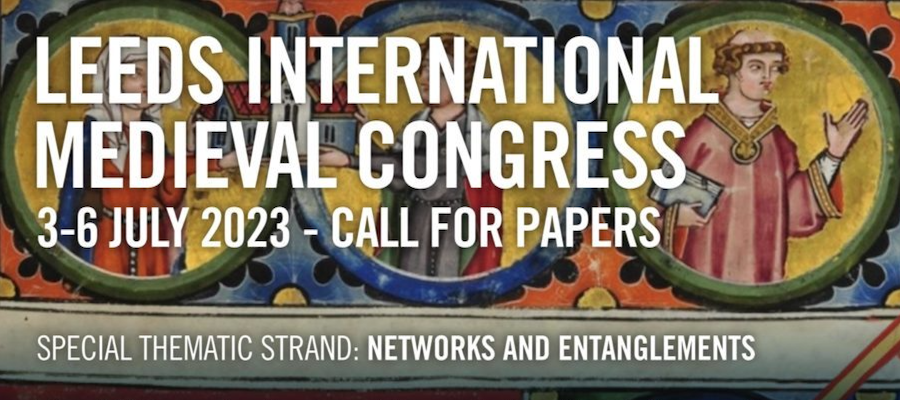Inscriptions as Networks and Entanglements in the Medieval Eastern Mediterranean, ERC GRAPH-EAST sponsored sessions at the 2023 International Medieval Congress, University of Leeds, July 3–6, 2023
The ERC GRAPH-EAST project (CESCM, University of Poitiers and CNRS) will sponsor three sessions that explore topics dealing with “Inscriptions as Networks and Entanglements in the Medieval Eastern Mediterranean” for the International Medieval Congress 2023 in Leeds (UK).
The Medieval Mediterranean has long been thought of in terms of networks, circulations, and dynamics of exchanges, at different scales. One type of “network” has not yet been studied: the epigraphic network formed by the inscriptions and graffiti in Latin alphabet of pilgrims, travellers, crusaders, military orders and merchants. The theme for the IMC Leeds 2023, “Networks and Entanglements,” presents an opportunity to explore the complex set of relationships between the epigraphic writing and its web of interactions in the Eastern Mediterranean.
The aim of the sessions is to explore, among others that might arise from the proposals, the following four sets of questions:
- Pilgrims, churchmen, merchants, and artists moved across Europe, Africa and Asia, back and forth. The inscriptions referring to the movements of such social groups bear precious information about their producer’s intentions, which can be reckoned both from their textual and linguistical content and from their technical and material features. Do some or all of these characteristics form a network or an entanglement? What kinds of networks, entanglements, paths, and circulations are revealed by the graphic signs? Is it possible to trace epigraphical recurrent patterns or connections within a small and/or a large area such as the one between the Eastern and Western coast of the Mediterranean basin?
- What is the relationship between inscriptions and micro (within a building) and macro space (within a continent)? For instance, from an architectural point of view the memory of the Holy Sepulchre was echoed in a large series of buildings and shrines which studded the Medieval Western realm. Is it possible to say the same about epigraphy? Were inscriptions conceived as to evoke the Holy Land or any other area of the Eastern Mediterranean? And vice versa, did inscriptions in the Eastern Mediterranean recall any Western region?
- Beyond the Latin alphabet, is it possible to think of inscriptions in different languages and scripts together, such as Arabic, Greek, Armenian, Syriac etc., as forming a vast graphic network in the East? For instance, in the Holy Places as the basilica of the Holy Sepulchre in Jerusalem or the Nativity church of Bethlehem?
- Medieval inscriptions formed a network also within a large span of time both backwards and forwards. If the classical Greek and Roman inscriptions were related to medieval ones in terms of content and form, medieval inscriptions had at their turn an impact on men and women of the modern and contemporary era. What was the political, intellectual, devotional, and social role of medieval inscriptions in modern societies? What were the connections and the entanglements linking the men and women of the past to the men and women of the present?
Art historic, archaeological, historic, and literary approaches are welcome, in particular through precise case studies.
